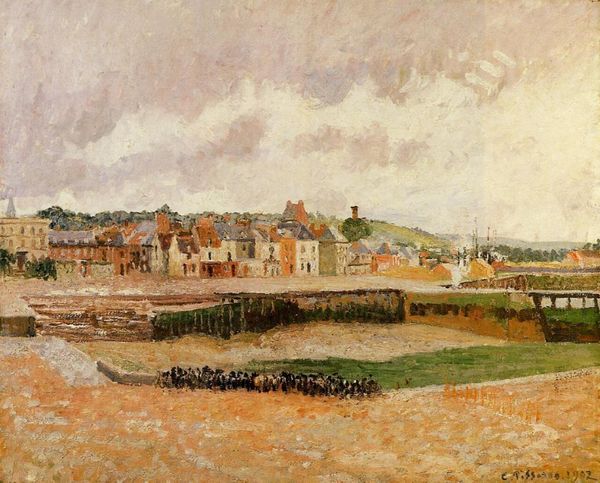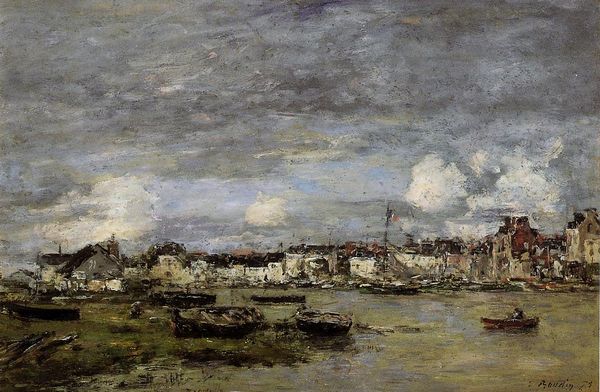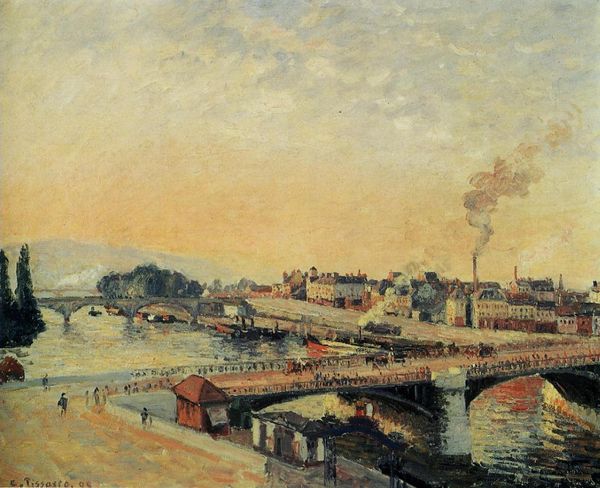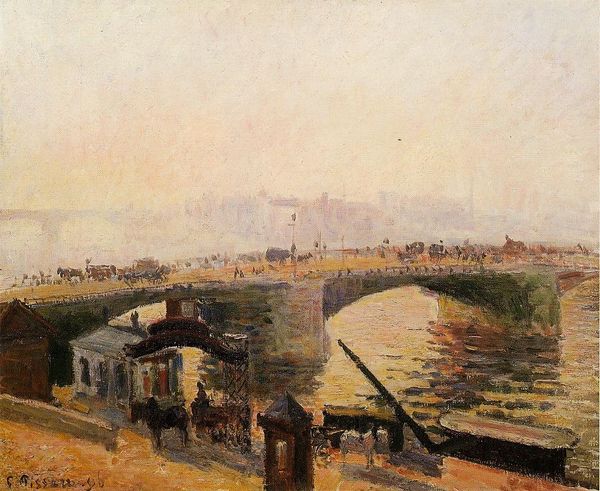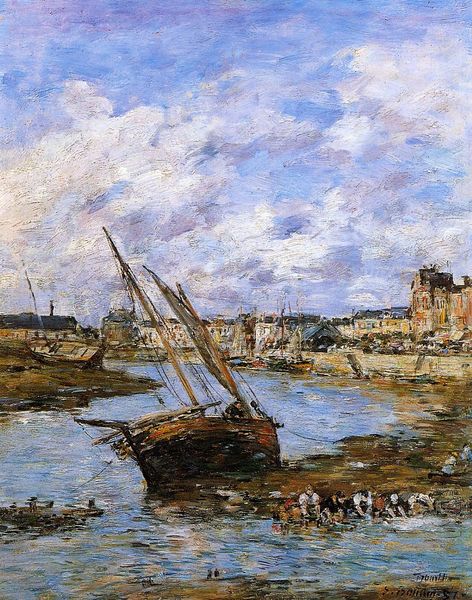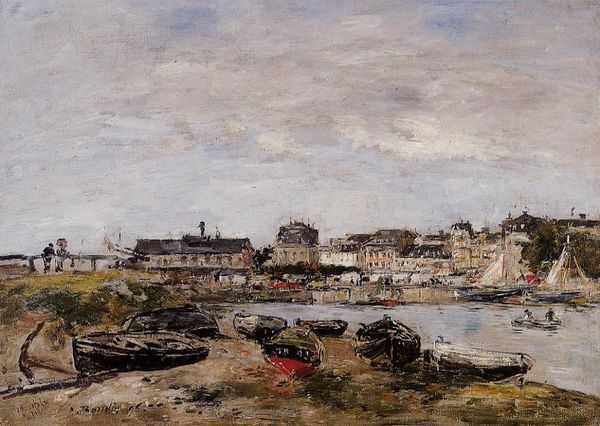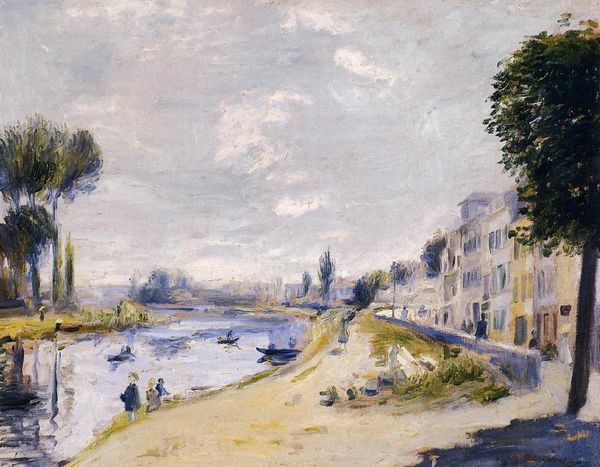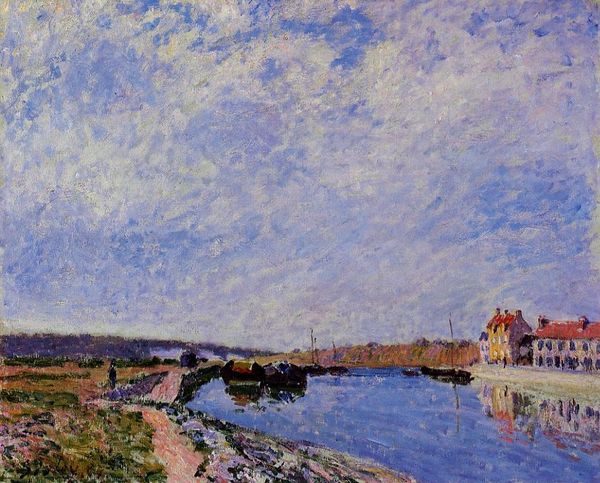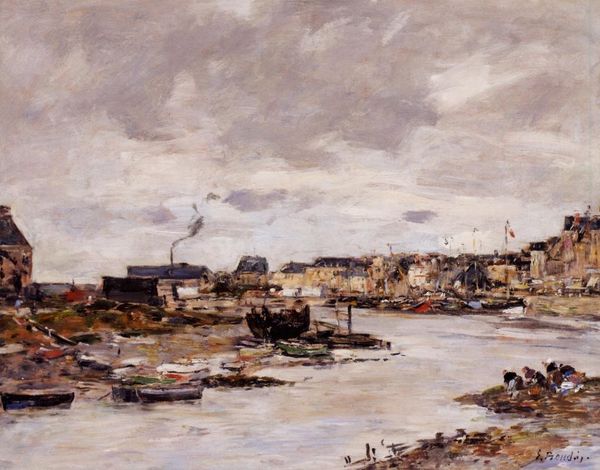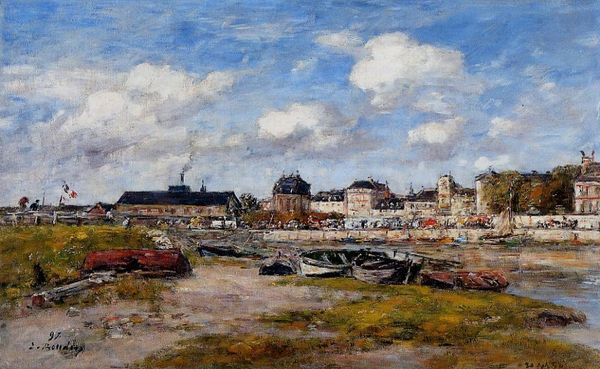
Copyright: Public domain
Eugène Boudin made "The Port of Trouville" with oil on canvas, a fairly standard combination for the mid-19th century. The way Boudin applied the paint, however, is quite distinctive. Notice how thin and translucent the layers are, almost like watercolor. This technique allowed him to capture the fleeting effects of light and atmosphere on the water and sky, a key preoccupation for artists at the time. It also speaks to the rising industrialization of paint production. Boudin was part of a generation that could buy pre-mixed colors in tubes, allowing for quicker, more portable work. This convenience freed artists to paint outdoors, directly observing their subjects. In "The Port of Trouville," the quick, sketch-like brushstrokes suggest a scene captured in a single session, reflecting the changing nature of labor and leisure in a rapidly modernizing world. By emphasizing the materiality and production of this painting, we can appreciate how it embodies the intersection of art, industry, and social change.
Comments
No comments
Be the first to comment and join the conversation on the ultimate creative platform.

